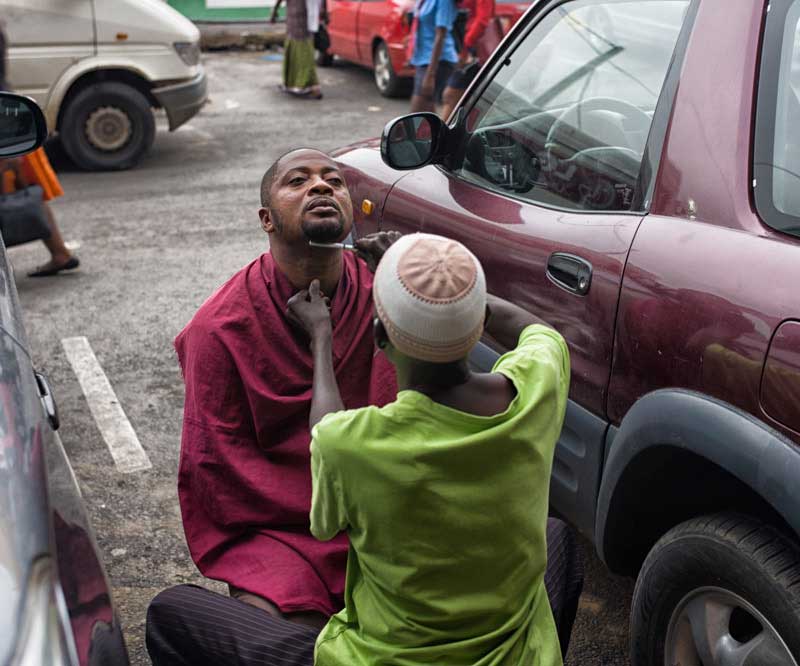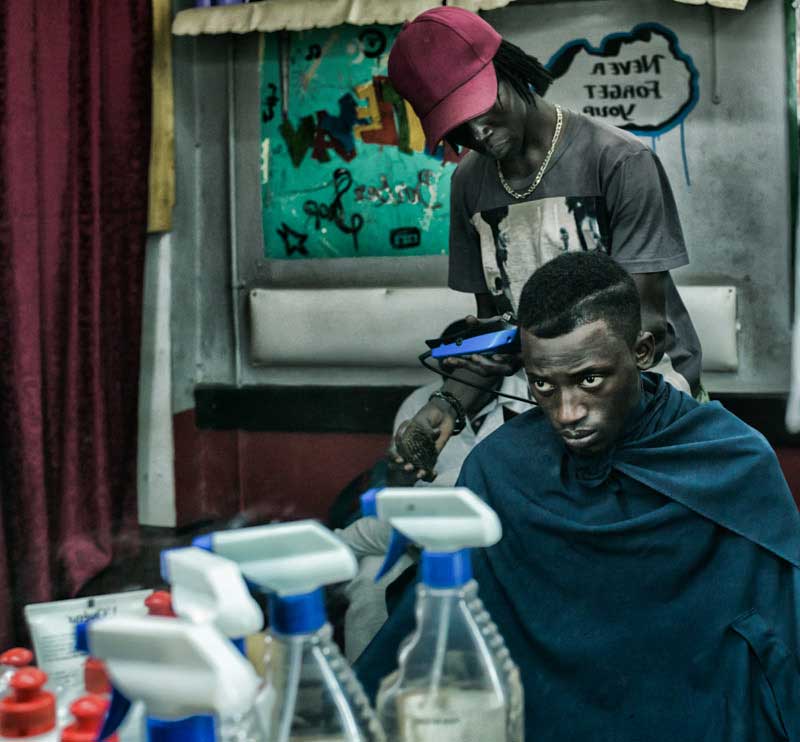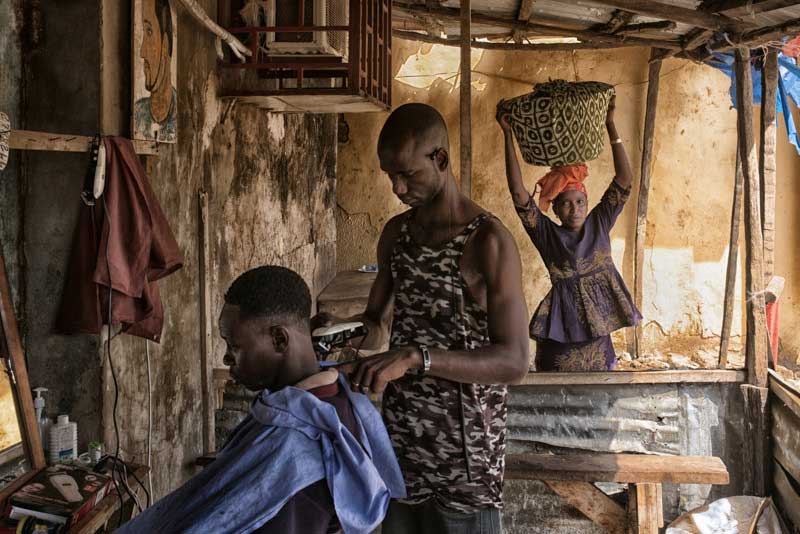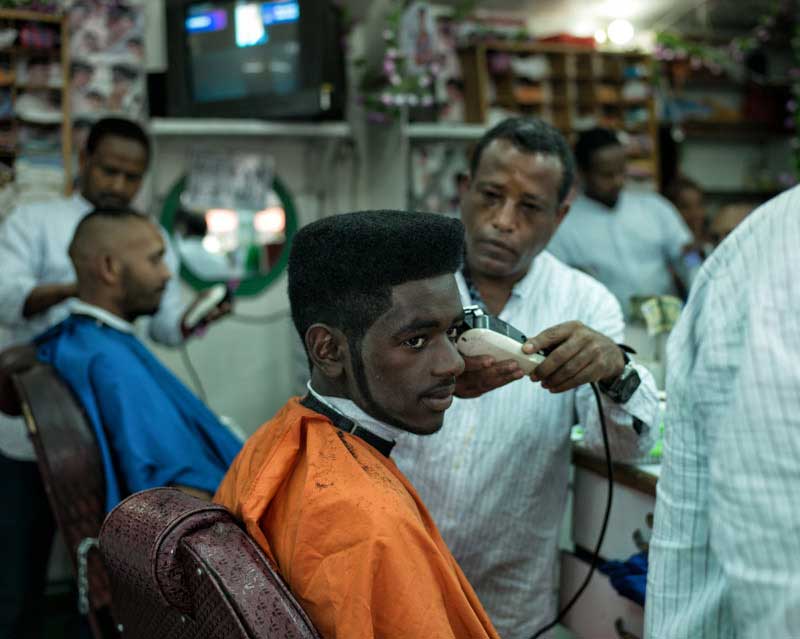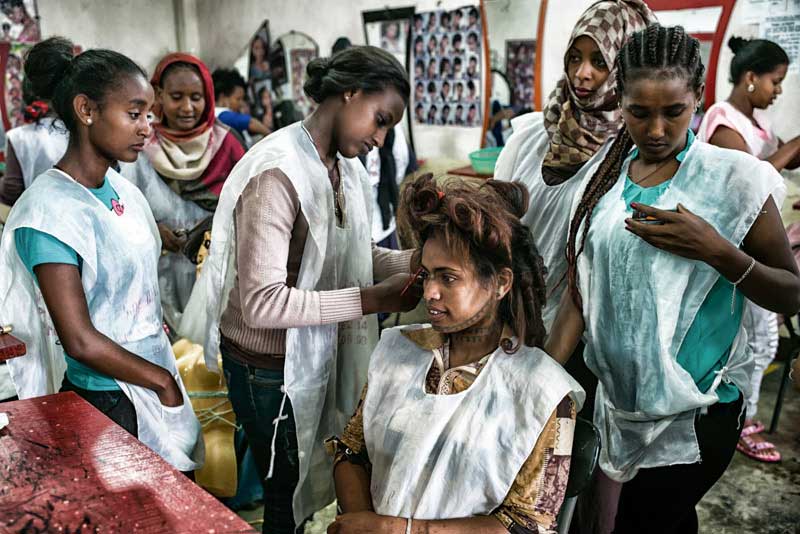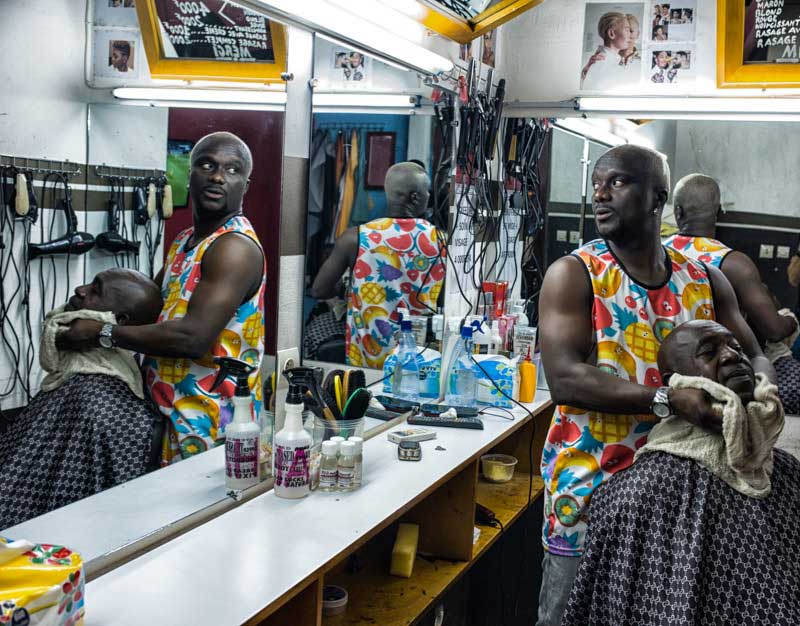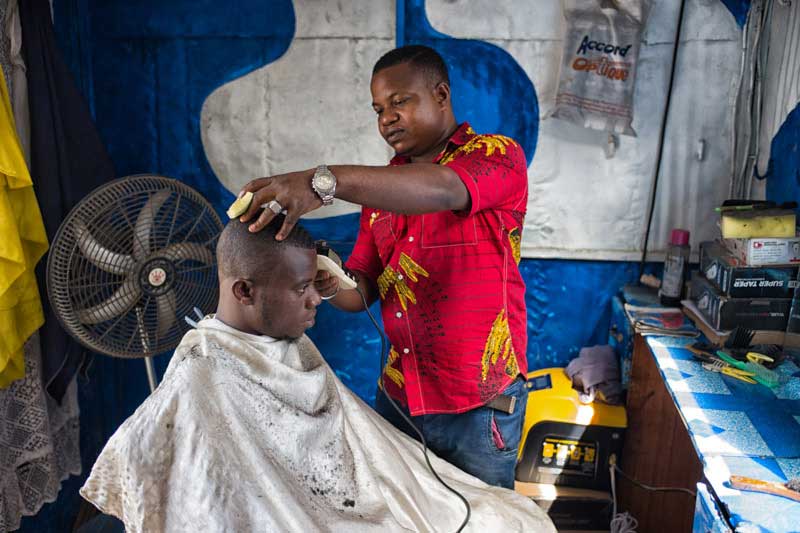In Africa and Latin America, hairdressers not only cut, shave and style hair; they build up hair like real architects. The tropical “Salon de coiffure” is, however, a very diverse world; from street barbershops to posh hair salons. Although there are no standard practices, hairdressers share the charm of always being a meeting place where time is suspended.
Laurent Muschel has travelled all over the Tropics, photographing the intimacy surrounding this special world of hair salons. It is said that the principal characteristic of street photography is the gift of reading signs and communicating them to an unknown audience, a skill that Laurent Muschel has exemplified. He discerns and photographs the small details and gestures, inviting us to come closer and explore further. He opens up an often overlooked world, a world that may feel both strange and familiar to all, but one no less full of beauty.
Laurent Muschel walks calmly through his world of motifs, forsaking all unnecessary drama from the then and there, not falling into the trap of a documentary on poverty in Africa. Hair is the pretext for something else, a pure photographic pleasure where a pair of scissors becomes more than a simple tool without soul. Tal Ben-Shahar in his book « Short Cuts to Happiness: Life-Changing Lessons from My Barber » say that hairdressers beautify us not only on the outside but also on the inside… Beyond the anecdote, Laurent Muschel’s pictures reveal that “inside”.
At the back of these hair salons, people are eating, talking, sleeping, or watching football matches on small TV screens. The multitude and diversity of the scenarios in Laurent Muschel’s pictures are part of his narrative principle.Colour also plays a very important role for Laurent Muschel in the production of his pictures, as it was the case in his earlier works. In many of the salons he has photographed, the interiors are not lit excessively brightly and as such, the colours are not overly vivid, often remaining tinted grey and brown. Conversely, there are a collection of pictures in the book, in which some elements glow brightly – the shirt of a Rasta man or the bright pink painted facades of some salons. But where the picture space is narrow, the colours are muted, and the eye of the viewer must work its way along the spectrum of hues and shadows, between the dark colours and the deep blacks.
Laurent Muschel transforms the business of hairdressing, which appears at first glance as “banal”, into a fetish ceremony. He turns the salons into churches, the chairs into thrones, the counters or tables with their hair dressing accessories into altars. Referencing this quasi-religious comparison, when Jean-Hubert Martin curated a famous exhibition in Düsseldorf, he called the accumulation of things that could be worshipped an art to be kneeled before. For this is how the spaces in Laurent Muschel’s photographs can be viewed; the photographer kneels down before beauty and its creation, an admiration with which we join. [Official Website]
Tropical Hair salons is the new book of the photographer which will be published in September (Publisher Lecturis)
